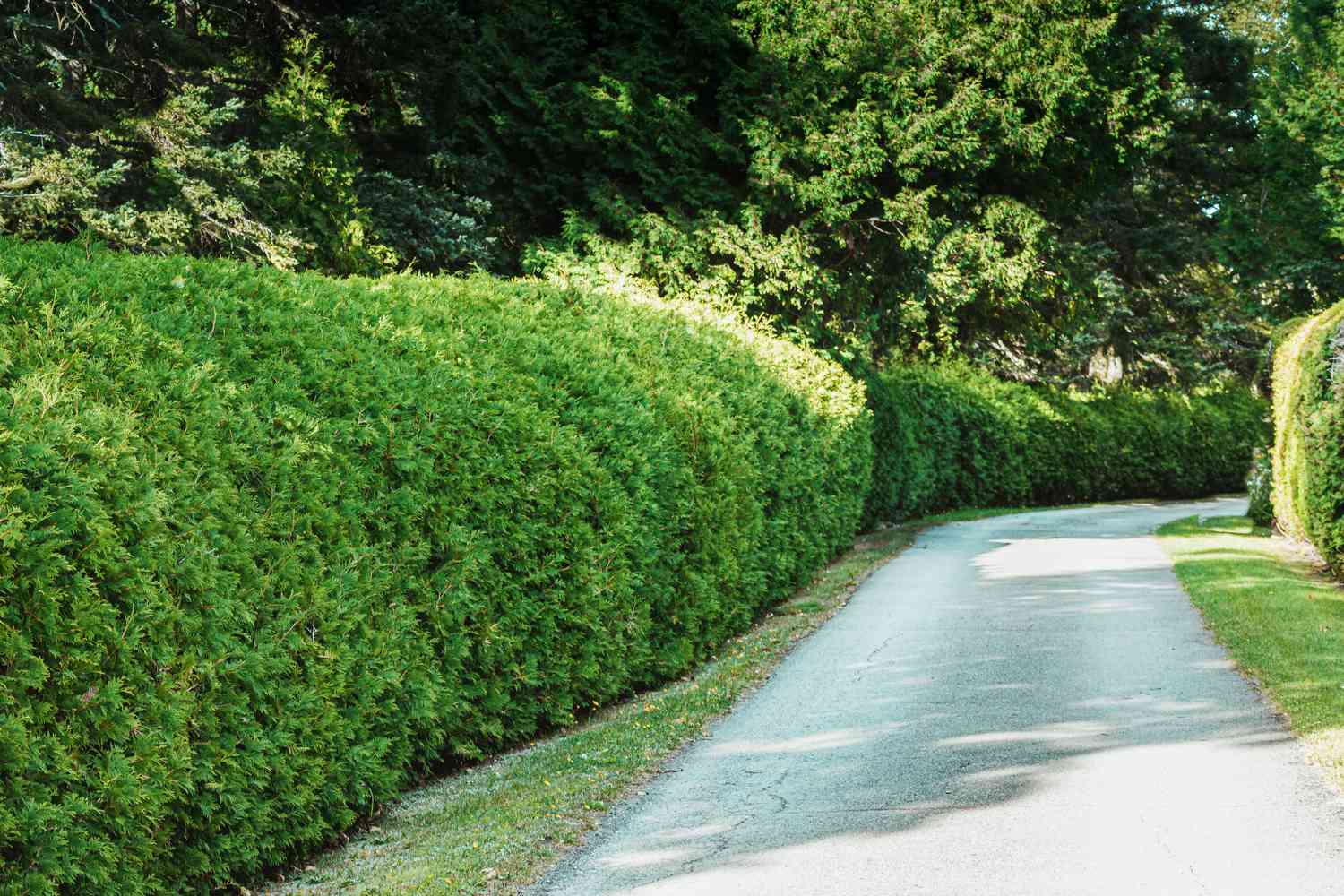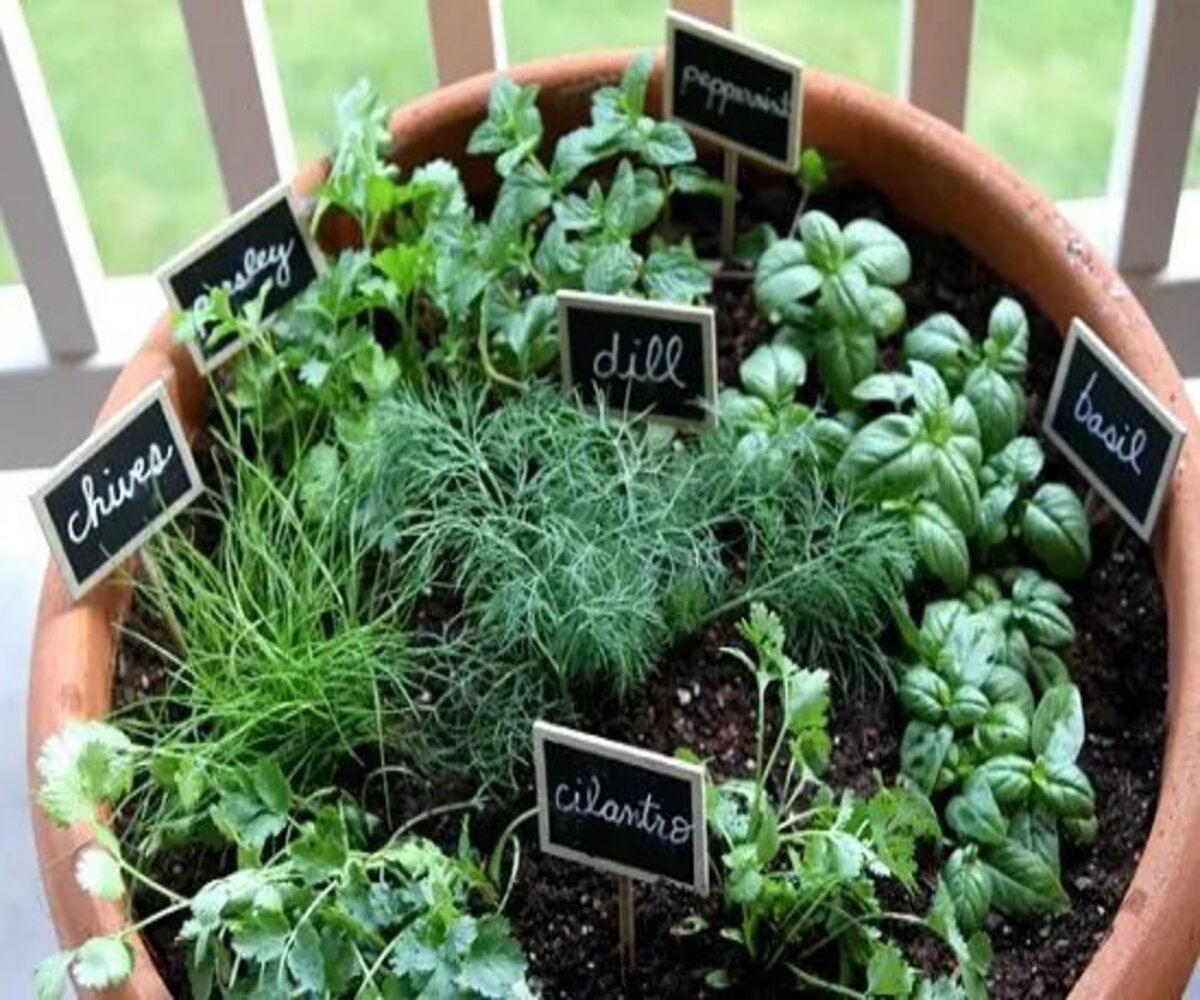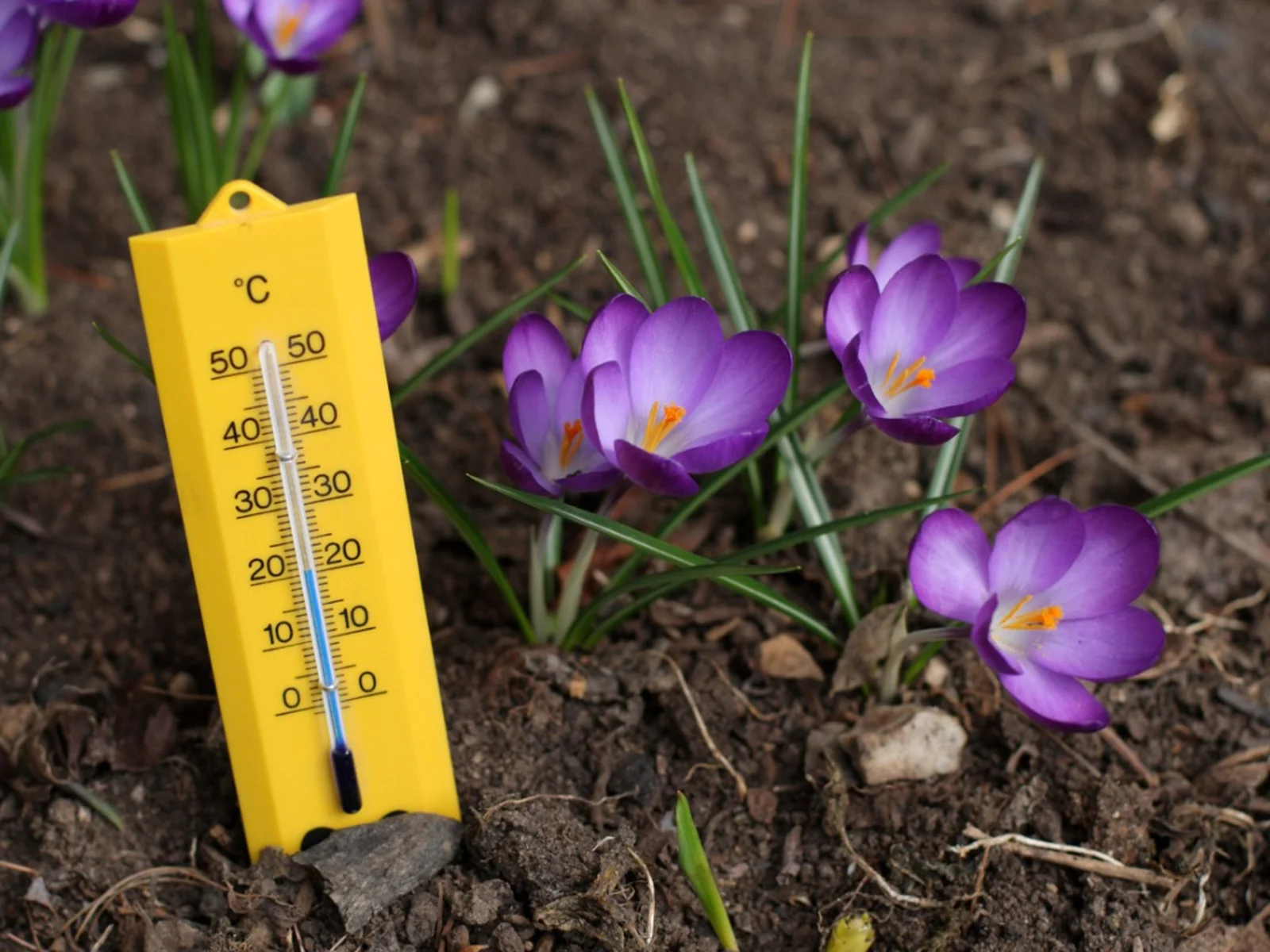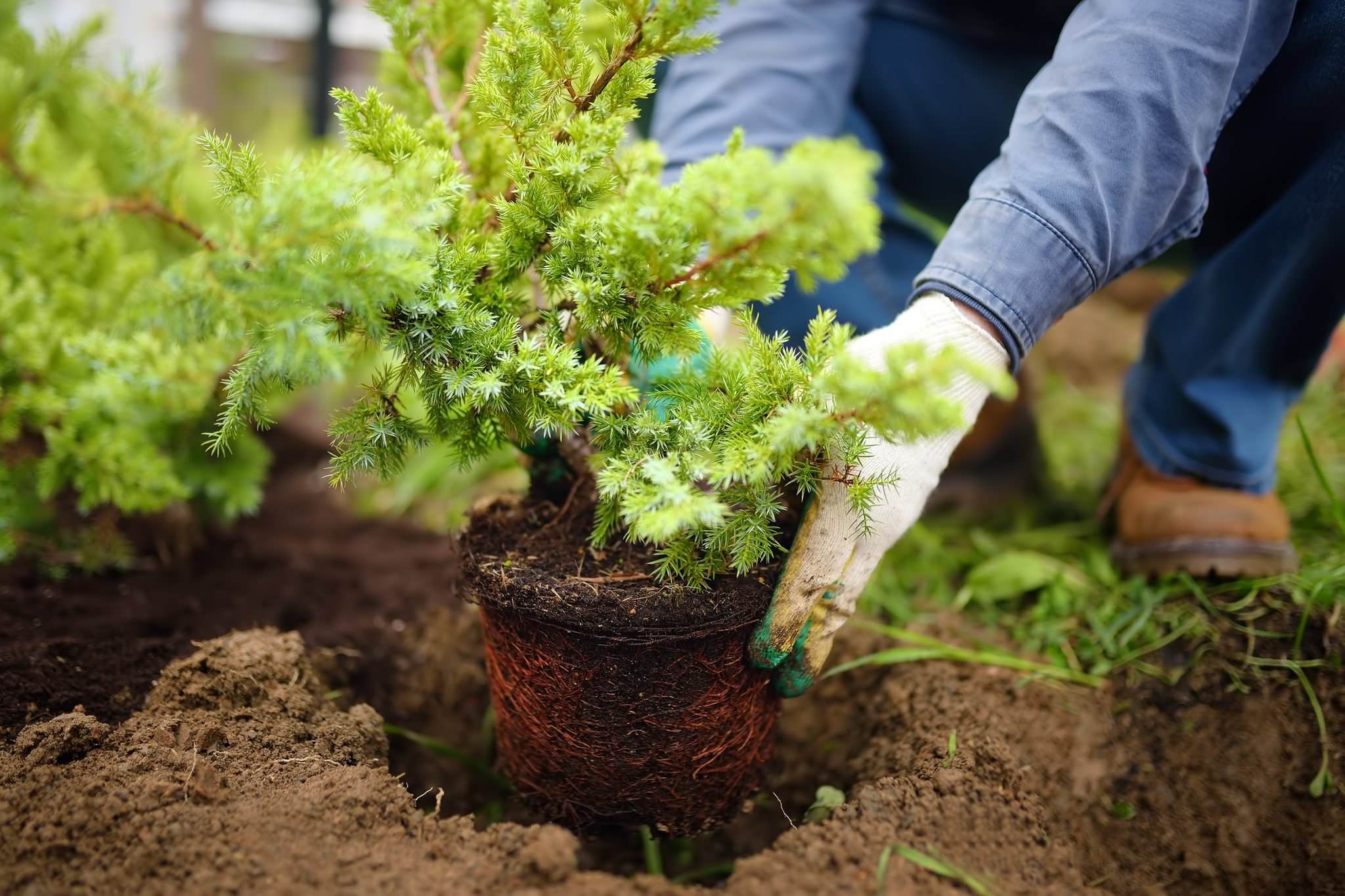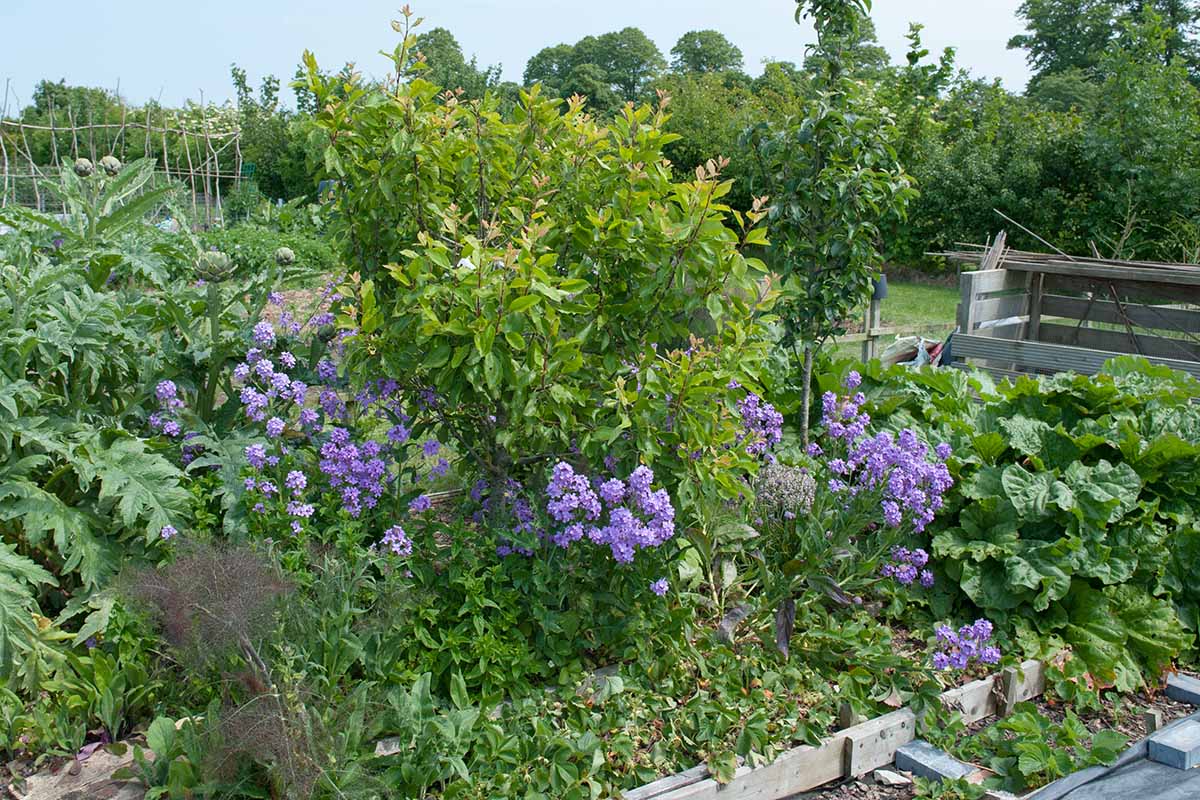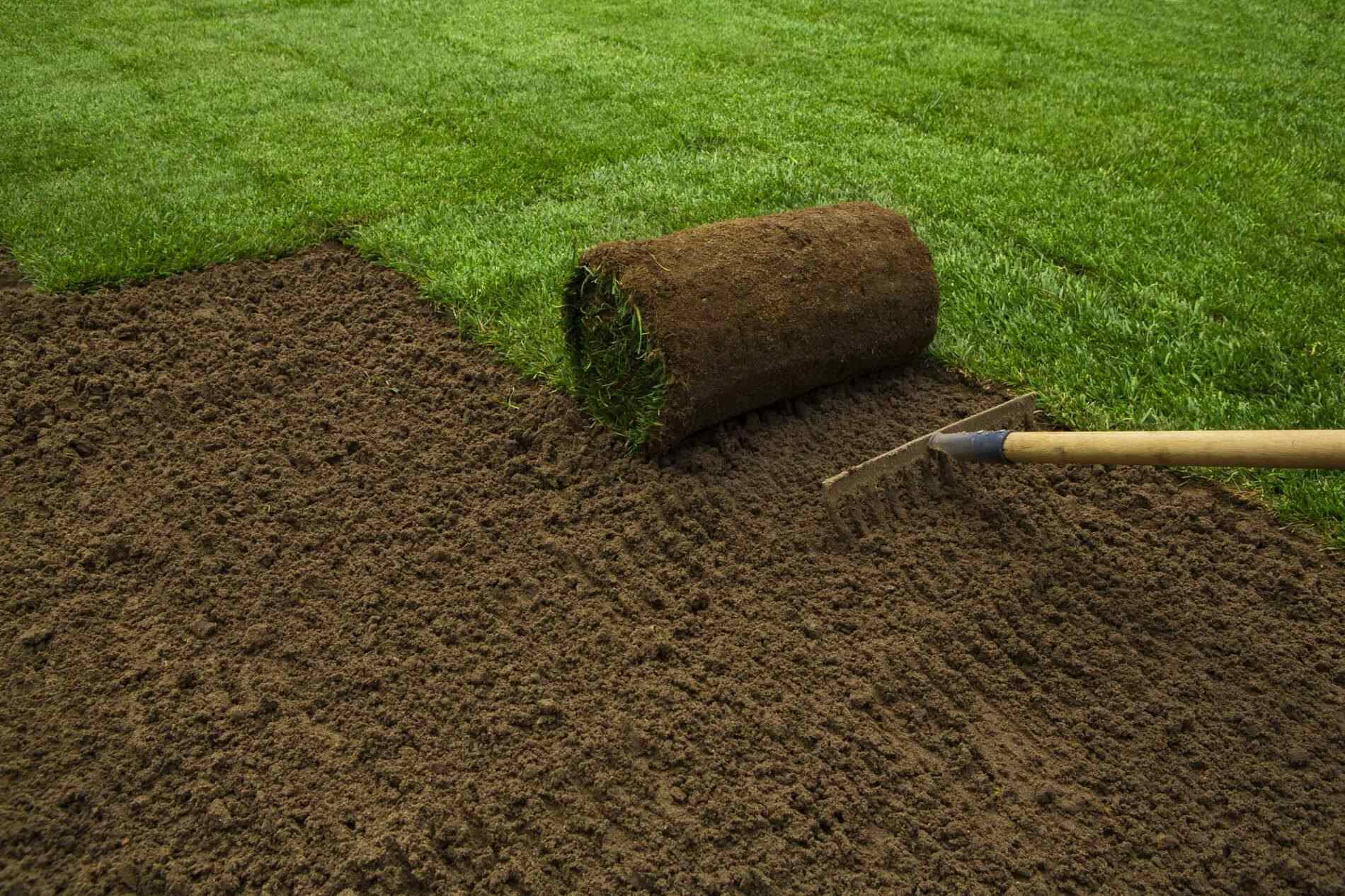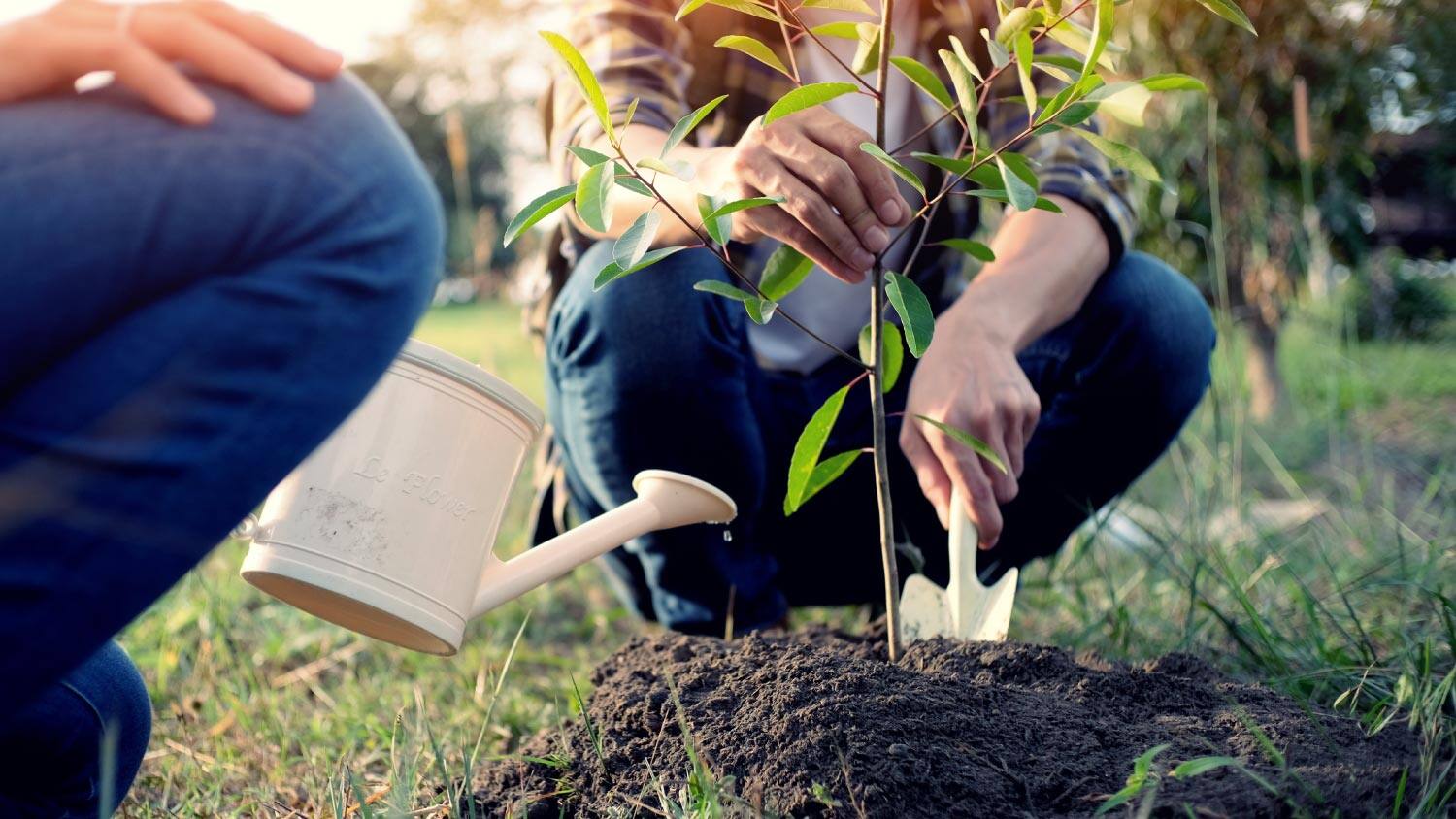Home>Gardening Techniques>Seasonal Gardening>How Late In The Fall Can You Plant Shrubs
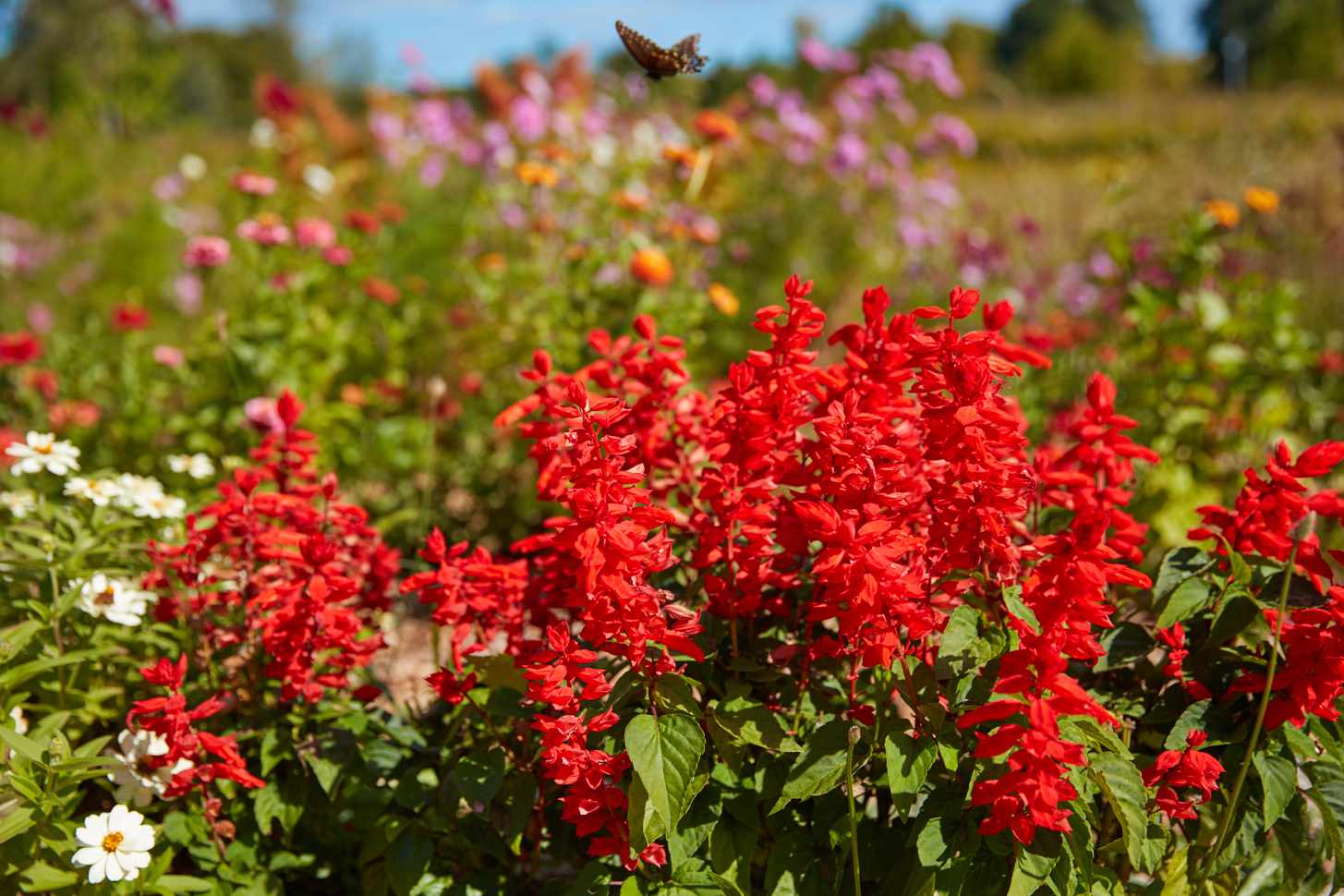

Seasonal Gardening
How Late In The Fall Can You Plant Shrubs
Modified: January 22, 2024
Discover the best time for seasonal gardening! Learn how late in the fall you can plant shrubs and enhance your garden before winter arrives.
(Many of the links in this article redirect to a specific reviewed product. Your purchase of these products through affiliate links helps to generate commission for Chicagolandgardening.com, at no extra cost. Learn more)
Table of Contents
Introduction
Welcome to the wonderful world of seasonal gardening! If you’re passionate about gardening and love watching your landscape transform through the seasons, then you’ve come to the right place. Fall is a magical time for planting, and in this article, we will delve into the topic of planting shrubs in the fall.
Adding shrubs to your garden is a fantastic way to enhance its beauty and create a sense of balance and structure. However, knowing the right time to plant shrubs can make all the difference in their successful growth. While spring is traditionally seen as the ideal planting time, fall has its own set of advantages when it comes to shrub planting.
Fall planting offers several benefits that are worth considering. The cooler temperatures and the moist soil create optimal conditions for root development. During this time, the plants can concentrate their energy on establishing strong root systems, which are crucial for their long-term survival and growth. Additionally, with the waning heat and fewer pests, shrubs have a better chance of thriving during the fall.
However, it’s important to note that not all shrubs can be planted in the fall. Factors such as climate, the type of shrub, and the specific planting requirements should be taken into consideration to ensure the success of your shrub planting endeavors.
In this article, we will explore the factors to consider when planting shrubs in the fall, the role of climate in determining planting time, and the optimal fall planting time for different types of shrubs. We will also provide tips and techniques for preparing the planting site, as well as care and maintenance guidelines for fall-planted shrubs. By the end of this article, you’ll be equipped with the knowledge to create a stunning garden filled with thriving fall-planted shrubs.
Factors to Consider when Planting Shrubs in the Fall
When it comes to planting shrubs in the fall, there are a few key factors to consider to ensure successful growth and establishment. By taking these factors into account, you can make informed decisions about which shrubs to plant and when to plant them.
1. Hardiness Zone: One of the most important factors to consider is your local hardiness zone. Different shrubs have different temperature and climate requirements, and planting a shrub outside of its recommended hardiness zone can result in poor growth or even death. Be sure to research the specific hardiness zone for each shrub you plan to plant and choose ones that are suitable for your climate.
2. Planting Time: While fall is generally a favorable time for shrub planting, it’s important to note that there is a limit to how late in the fall you can plant. As temperatures drop and frost becomes more common, certain shrubs may struggle to establish roots before winter sets in. It’s best to plant shrubs at least six to eight weeks before the first hard frost to ensure they have enough time to acclimate and establish roots.
3. Soil Conditions: Before planting shrubs, it’s essential to assess the soil conditions in your garden. Shrubs thrive in well-drained soil with the right balance of nutrients. Conduct a soil test to determine the pH level and nutrient composition of your soil. If necessary, amend the soil with organic matter to improve its structure and fertility, providing a healthy environment for the shrubs to grow.
4. Sun Exposure: Different shrubs have varying sun exposure requirements. Some thrive in full sun, while others prefer partial shade. Before planting, consider the light conditions in your garden and choose shrubs that are suited to the available sun exposure.
5. Watering Needs: Proper watering is crucial for the survival and growth of newly planted shrubs. In fall, the weather tends to be cooler and more favorable for shrubs, but it’s still important to monitor and provide adequate water to newly planted shrubs until winter arrives. Be mindful of rainfall levels and adjust your watering schedule accordingly.
By considering these factors when planting shrubs in the fall, you can create an optimal environment for their growth and ensure they thrive in your garden.
The Role of Climate in Determining Planting Time
Climate plays a crucial role in determining the optimal planting time for shrubs. Different regions experience varying temperature and weather patterns, which can greatly impact the success of fall planting. Understanding your local climate will help you make informed decisions about when to plant your shrubs.
1. Fall Frost Dates: The timing of the first fall frost is a significant consideration when determining planting time. Frost can damage or kill young plants, so it’s important to plant shrubs early enough in the fall to allow them sufficient time to establish roots before the arrival of frost. Keep track of your region’s average first frost date and plan your planting accordingly.
2. Temperature Range: Consider the average temperature range in your area during the fall months. Shrubs generally prefer cooler temperatures for root development, so planting them when the weather is still relatively mild is beneficial. However, avoid planting too early in fall when temperatures are still high, as heat stress can impede root growth. Strike a balance by selecting a planting time when temperatures are moderate and favorable for shrub growth.
3. Rainfall Patterns: The availability of water is another important factor influenced by climate. Fall is typically a time of increased rainfall in many regions, which can provide adequate moisture for newly planted shrubs. However, it’s important to be mindful of excessive rain or prolonged periods of drought. Too much water can lead to root rot, while insufficient water can cause stress and hinder growth. Monitor rainfall patterns and adjust your watering routine accordingly.
4. Microclimates: Microclimates are localized pockets within a region that have slightly different climatic conditions. Factors such as elevation, proximity to bodies of water, and shelter from wind can create microclimates that differ from the overall climate of the area. Be aware of any microclimates in your garden and consider their influence on planting time. For example, areas with enhanced warmth or protection from wind may allow for earlier planting compared to the rest of the region.
Understanding the role of climate in determining planting time is essential for successful shrub growth. By considering factors such as fall frost dates, temperature range, rainfall patterns, and microclimates, you can choose an optimal planting time that aligns with your local climate and increases the likelihood of healthy and thriving shrubs in your garden.
Optimal Fall Planting Time for Different Types of Shrubs
The optimal fall planting time for shrubs can vary depending on their specific characteristics and requirements. While fall is generally a favorable season for planting shrubs, it’s important to take into account the specific needs of different types of shrubs to ensure their successful establishment and growth. Here are some guidelines for the optimal fall planting time for different types of shrubs:
- Deciduous Shrubs: Deciduous shrubs, which shed their leaves in the fall, are typically best planted in late summer or early fall, before the first hard frost. By planting them at this time, they have enough time to establish roots before winter dormancy. However, avoid planting them too late in the fall when temperatures decrease significantly.
- Evergreen Shrubs: Evergreen shrubs, which retain their leaves throughout the year, can be planted in early to mid-fall. These shrubs benefit from the cooler temperatures and moist soil, which promote root development. Planting them before the first hard frost allows them to acclimate and establish roots before winter arrives.
- Flowering Shrubs: Flowering shrubs can be divided into two categories: early bloomers and late bloomers. Early-blooming shrubs, such as Forsythia or Lilac, should be planted in the early fall, while late-blooming shrubs, like Hydrangea or Butterfly Bush, can be planted in mid to late fall. This ensures that early bloomers have sufficient time to establish roots, while late bloomers may benefit from cooler temperatures and reduced stress.
- Fruit-Bearing Shrubs: Fruit-bearing shrubs, such as Blueberries or Raspberries, are best planted in early fall. This allows them to establish a strong root system before winter and increases the chances of a bountiful harvest in the following year.
- Container-Grown Shrubs: Container-grown shrubs can be planted throughout the fall, but it’s important to ensure that they have enough time to establish roots before winter. Be mindful of watering and monitor soil moisture to prevent them from drying out during the transitional period.
It’s essential to research the specific planting requirements and recommendations for each type of shrub you plan to plant. Nurseries, gardening resources, and local gardening experts can provide valuable information on the optimal planting time for different shrub varieties in your area.
Remember that these general guidelines may vary based on your specific climate and location. It’s always best to observe local conditions, including temperature, frost dates, and rainfall patterns, to determine the most suitable planting time for your shrubs. By choosing the optimal fall planting time for different types of shrubs, you give them the best chance to establish, thrive, and bring beauty to your garden.
Preparing the Planting Site
Preparing the planting site is a crucial step in ensuring the success of your fall-planted shrubs. By creating a suitable environment, you can provide the necessary conditions for proper root development and healthy growth. Here are some essential steps to prepare the planting site:
1. Clear the Area: Start by clearing the planting area of any weeds, grass, rocks, or debris. This will give your shrubs ample space to grow without competition for nutrients and water.
2. Test the Soil: Conduct a soil test to determine its pH level and nutrient composition. Most shrubs prefer a slightly acidic to neutral soil pH. If the pH is too high or low, make the necessary amendments by adding organic matter or lime/sulfur to adjust the soil pH to the appropriate range.
3. Improve Drainage: Ensure that the planting site has good drainage. If your soil retains water, amend it with organic matter, such as compost, to improve drainage. This is particularly important for shrubs that are sensitive to soggy soil conditions.
4. Enhance Nutrient Content: Incorporate organic matter into the soil to enhance its nutrient content. Well-rotted compost or aged manure can be mixed into the planting hole or spread as a layer on top of the soil. This will provide essential nutrients for the shrubs’ growth and establishment.
5. Dig the Planting Hole: Dig a hole that is approximately twice the diameter and depth of the shrub’s root ball. This will provide enough space for the roots to spread out and establish. Ensure the hole is deep enough to allow the shrub to be planted at the same depth it was originally planted in its container.
6. Loosen the Root Ball: Before planting, gently loosen the root ball of the shrub. This helps encourage the roots to grow outward and establish in the surrounding soil.
7. Amend Soil: Mix some of the amended soil with the existing soil to backfill the hole. This will provide a blend of nutrients and create a smooth transition for the roots as they expand into the surrounding soil.
8. Water Thoroughly: After planting, water the shrub thoroughly to settle the soil around the roots and remove any air pockets. This will ensure good contact between the roots and the soil, promoting proper root establishment.
9. Apply Mulch: Finally, apply a layer of organic mulch around the base of the shrub. Mulch helps retain soil moisture, suppresses weeds, and regulates soil temperature. Leave a gap between the mulch and the shrub’s stem to prevent moisture accumulation and potential rotting.
By following these steps, you can create an optimal planting site for your fall-planted shrubs. Providing the necessary preparation will give your shrubs the best chance to thrive and flourish in their new home. Remember to adjust these steps based on the specific needs of the shrub species you are planting.
Planting Techniques for Fall
Proper planting techniques are crucial for the success of your fall-planted shrubs. The way you handle and plant your shrubs can greatly impact their root development and overall growth. Here are some important techniques to keep in mind when planting shrubs in the fall:
1. Select Healthy Shrub: Choose shrubs that are of high quality and free from any signs of disease or damage. Look for plants with vibrant foliage, sturdy stems, and a well-developed root system.
2. Consider the Planting Hole: Dig a hole that is wide and deep enough to accommodate the roots of the shrub. The hole should be slightly wider than the root ball to allow the roots to spread out comfortably.
3. Loosen the Roots: Before planting, loosen the roots of the shrub if they are compacted or tangled. Gently tease them apart to encourage outward growth and prevent them from circling within the planting hole.
4. Positioning the Shrub: Place the shrub in the planting hole, ensuring that the top of the root ball is level with or slightly above the ground surface. This prevents the shrub from sinking too deep into the soil after watering and settling.
5. Backfill the Hole: Fill the space around the roots with the amended soil mixture, gently pressing it down to eliminate air pockets. Avoid compacting the soil too tightly, as this can hinder root penetration and water absorption.
6. Watering: After planting, water the shrub thoroughly to settle the soil and promote root establishment. Provide enough water to thoroughly moisten the root ball and surrounding soil, but avoid overwatering, as this can lead to root rot.
7. Mulching: Apply a layer of organic mulch around the base of the shrub, leaving a small gap around the stem. Mulch helps conserve moisture, suppress weeds, and regulate soil temperature. Aim for a thickness of 2-3 inches, taking care not to pile the mulch directly against the shrub’s trunk.
8. Staking (if necessary): If your shrub is tall or prone to leaning, consider staking it to provide support. Use stakes and ties that allow for some movement, as this promotes stronger root development. Monitor the shrub regularly and remove the stakes once it is firmly established.
9. Regular Watering: Even though fall typically brings more rainfall, it’s important to monitor soil moisture and provide supplemental water as needed. Check the soil regularly and water when the top few inches feel dry. Adjust the watering schedule as the weather cools and rainfall diminishes.
10. Pruning: Avoid pruning fall-planted shrubs until the following spring. Pruning can stimulate new growth, which may be vulnerable to winter damage. Instead, focus on providing proper care and allow the shrub to establish before considering any pruning measures.
By following these planting techniques, you can give your fall-planted shrubs the best chance for success. Remember to consider the specific requirements of the shrub species you are planting, and adjust the techniques accordingly.
Care and Maintenance of Fall-Planted Shrubs
Caring for fall-planted shrubs is essential for their long-term health and vitality. While these shrubs have the advantage of cooler temperatures and ample moisture during the fall season, they still require proper care and attention to ensure their successful establishment and ongoing growth. Here are some important care and maintenance tips for fall-planted shrubs:
1. Watering: Adequate watering is crucial, especially during the first year after planting. While fall brings cooler temperatures and increased rainfall, it’s important to monitor soil moisture and supplement with additional water if necessary. Water deeply and less frequently to encourage deep root development.
2. Mulching: Maintain a layer of organic mulch around the base of the shrub to help conserve moisture, suppress weeds, and regulate soil temperature. Replenish the mulch as needed to maintain a thickness of 2-3 inches. Remember to keep the mulch a few inches away from the shrub’s stem to prevent rot.
3. Pruning: Pruning of fall-planted shrubs is generally avoided until the following spring. Pruning in the fall can stimulate new growth, which may be vulnerable to winter damage. Once the shrub is established in the spring, you can address any necessary pruning to maintain its shape, remove dead or damaged branches, and promote overall health.
4. Fertilizing: Avoid applying fertilizer to fall-planted shrubs immediately after planting. New shrubs need time to acclimate and establish roots before they can effectively absorb nutrients. However, in the spring, a slow-release, balanced fertilizer can be applied according to the specific needs of the shrub species. Follow the recommended dosage and application instructions for best results.
5. Pest and Disease Management: Regularly inspect your shrubs for any signs of pests or diseases. Early detection can prevent serious infestations or damage. Insecticides and fungicides should be used sparingly and only when necessary, taking care to follow the instructions provided by the product manufacturer.
6. Winter Protection: In colder regions, provide winter protection for your fall-planted shrubs. Apply a layer of mulch around the base to insulate the roots. For more delicate shrubs, consider adding protective coverings, such as burlap, to shield them from harsh winter winds and extreme temperature fluctuations.
7. Regular Monitoring: Regularly monitor the health and growth of your fall-planted shrubs. Look for any signs of stress, such as wilting leaves, discoloration, or stunted growth. Promptly address any issues to prevent further damage and ensure optimal plant health.
8. Ongoing Maintenance: Beyond the initial establishment period, continue to provide regular maintenance for your shrubs. This includes pruning as needed, removing weeds, monitoring for pests and diseases, and providing adequate water and nutrient support.
By following these care and maintenance practices, you can help your fall-planted shrubs thrive and flourish in your garden. Remember that each shrub species may have specific care requirements, so it’s important to research and understand their individual needs to provide them with the best care possible.
Conclusion
Fall is an excellent time for planting shrubs and enhancing the beauty of your garden. By considering the factors that influence fall planting, such as hardiness zone, climate, and soil conditions, you can make informed decisions about the types of shrubs to plant and the optimal planting time. Preparing the planting site and following proper planting techniques are crucial for establishing healthy roots and ensuring the success of fall-planted shrubs.
Throughout the fall season and beyond, providing care and maintenance for your shrubs is essential. Adequate watering, mulching, and monitoring for pests and diseases are important habits to develop. Regular pruning and fertilizing can help maintain the health and shape of your shrubs. By giving your shrubs the attention they need, you can create a thriving and beautiful landscape.
Remember that each shrub species has its own specific requirements and preferences, so it’s important to research and understand the needs of your chosen shrubs. Local nurseries, gardening resources, and experts can provide valuable advice tailored to your specific climate and area.
By following the guidelines and tips outlined in this article, you can confidently plant and care for shrubs in the fall, bringing vibrant colors, interesting textures, and structural beauty to your garden. Embrace the possibilities of fall planting and enjoy the transformation of your landscape as your shrubs grow and flourish for years to come.

